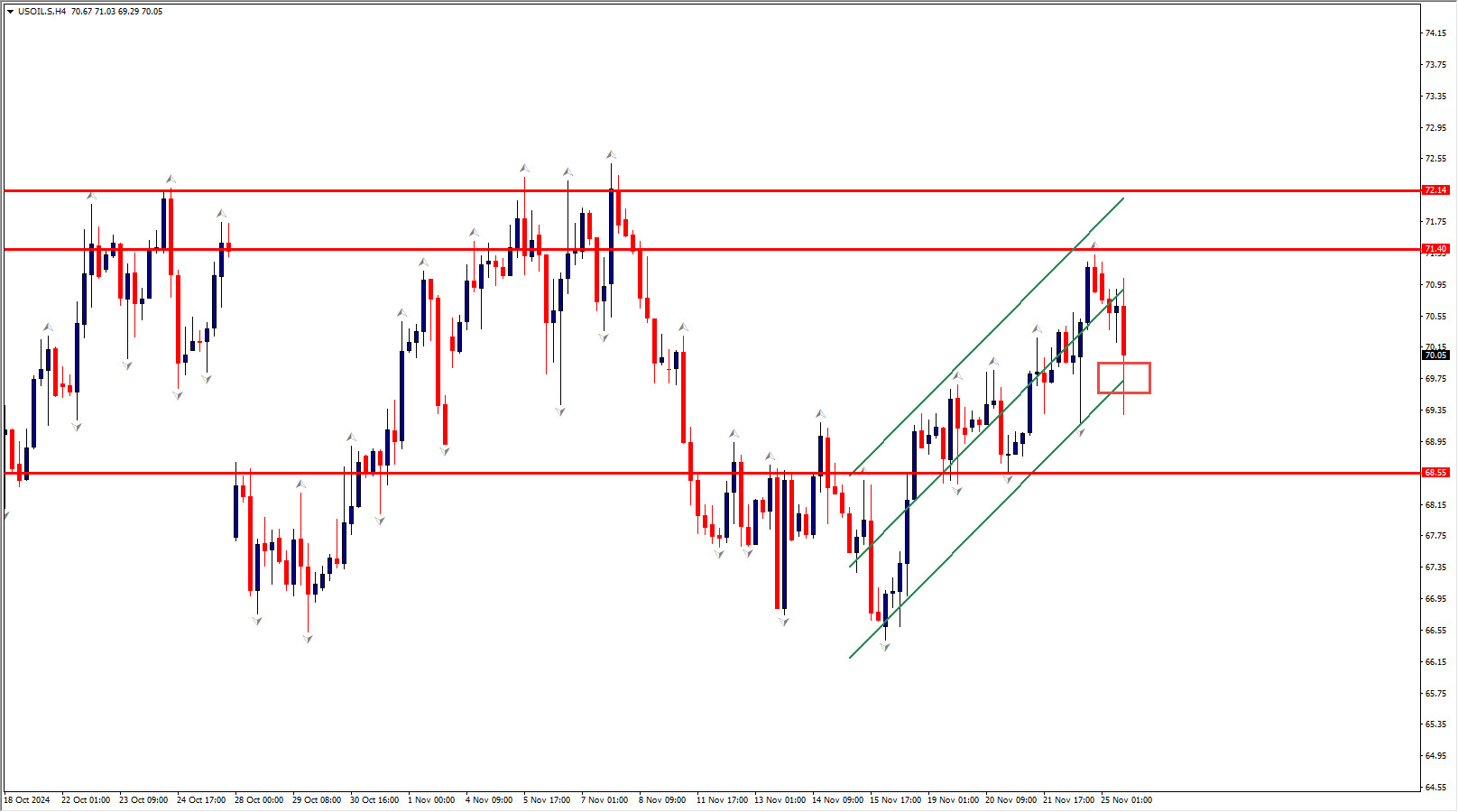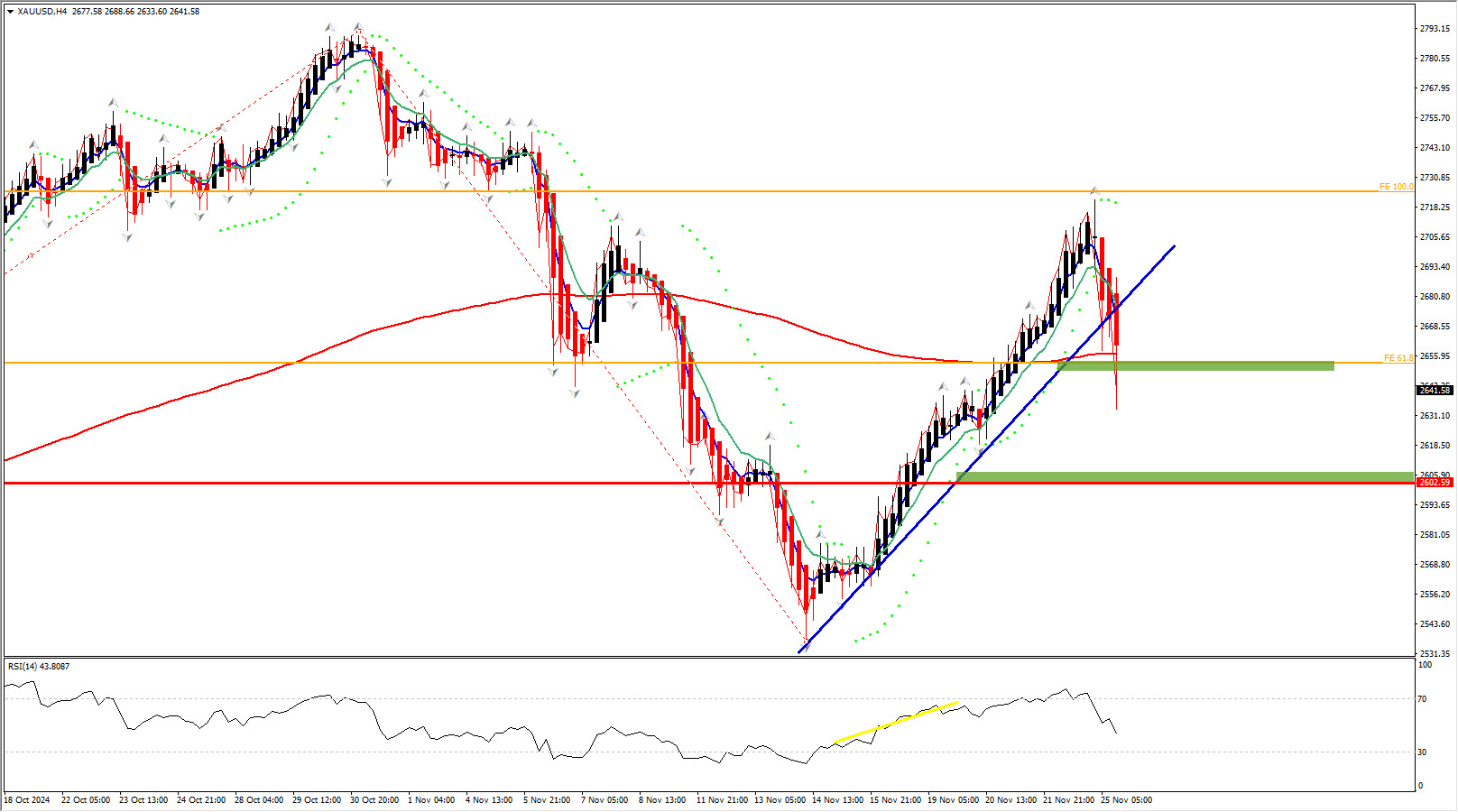Commodity Indexes Rise as Oil and Gold Rally Amid Geopolitical Tensions
Commodity indexes saw significant gains last week as oil and gold prices surged, driven by escalating geopolitical tensions. The war between Russia and Ukraine sparked concerns of broader conflicts, increasing demand for safe-haven assets and raising supply risks. While copper and other industrial metals stabilized, their growth was limited by fears of a sluggish recovery in China.
Oil Prices Surge Amid Geopolitical Risks and Supply Concerns
Oil prices rebounded last week, despite a stronger Dollar and forecasts of an oversupplied market in 2025. The escalation of geopolitical tensions reignited concerns over supply disruptions, particularly in critical oil-producing regions. The US and UK permitted Ukraine to strike Russian targets, while Russia responded by launching a new hypersonic missile capable of carrying nuclear warheads.
Markets are closely monitoring the potential for a wider conflict in Europe, with concerns that vital oil, gas, and refining infrastructure could be targeted, causing long-term damage. The US also imposed new sanctions on Russia’s Gazprombank, further complicating the supply outlook. On the demand side, China announced measures to support energy imports, amid fears of US tariffs. China’s crude oil imports are expected to rebound in November, with oil imports in India also rising, contributing to positive market sentiment.
Oil prices are lower again today, as profit taking set in and as geopolitical tensions cooled following reports that Isreal and Lebanon have agreed to the terms of the ceasefire.
Meanwhile, Iran further increased its oil prices for deliveries to private buyers in China, despite US sanctions designed to restrict normal exports. Bloomberg reported on Friday that private refiners in China bought Iran light crude for December arrival at a discount of USD 2-3 per barrel, against the ICE Brent benchmark. That was the smallest discount reported this year. Bloomberg also suggested that last month’s U.S. decision to add more Iran-linked tankers to its list of sanction, had contributed to higher prices for Chinese refiners.
However, poor confidence data from the Eurozone and the UK highlighted recession risks, limiting the rise in oil prices on Friday.
Gold and Silver Prices Surge Amid Risk Aversion
Gold prices experienced a 6% weekly gain, following the worst performance since June 2021. Despite a stronger dollar, rising geopolitical tensions and market uncertainty drove increased demand for gold and silver as safe-haven assets. After a 5-day rally, gold prices corrected earlier this week, as risk aversion eased and the dollar weakened, with markets now focused on US political developments and the Federal Reserve’s outlook.
Today, bullion has pared some gains at the start of the week and gold is down -2.3% at $2640 per barrel as risk appetite improves and haven flows reverse. Traders are mulling political nominations in the US as well as interest rate outlooks, and gold fell as much as 2.1% despite a weaker dollar and a correction in Treasury yields.
Silver, while underperforming compared to gold, also posted solid gains thanks to haven demand and a reassessment of industrial metal demand. Copper, steel, and iron ore prices stabilized last week, with steel prices reaching the highest levels in over a month. Data revealed a 4% rise in new infrastructure investment in China, and the government has increased support to boost steel production, which rose in October, partly due to a rise in exports.
Sugar, Coffee, and Cocoa Markets Respond to Supply Challenges
Sugar futures continued their cautious downtrend after hitting multi-month highs in September. The International Sugar Organization (ISO) revised its 2024/25 global supply deficit forecast down to 2.51 million tons, following reports of increased sugar production in Thailand and Brazil.
Coffee prices surged to the highest level since April 2011, driven by concerns over Brazil’s drought and its impact on future output. Analysts predict that coffee prices may continue to rise to stimulate supply, as consumer demand shifts towards brews that require more beans.
Cocoa prices remained near the two-month highs seen last week, driven by concerns over West Africa’s crop, with excessive rainfall and structural issues, such as a lack of long-term investment in cocoa trees, threatening production. Cocoa prices are still over 100% higher compared to the start of the year.
Click here to access our Economic Calendar
Andria Pichidi
Market Analyst
Disclaimer: This material is provided as a general marketing communication for information purposes only and does not constitute independent investment research. Nothing in this communication contains, or should be considered as containing, an investment advice or an investment recommendation or a solicitation for the purpose of buying or selling of any financial instrument. All information provided is gathered from reputable sources and any information containing an indication of past performance is not a guarantee or reliable indicator of future performance. Users acknowledge that any investment in Leveraged Products is characterized by a certain degree of uncertainty and that any investment of this nature involves a high level of risk for which the users are solely responsible and liable. We assume no liability for any loss arising from any investment made based on the information provided in this communication. This communication must not be reproduced or further distributed without our prior written permission.





















